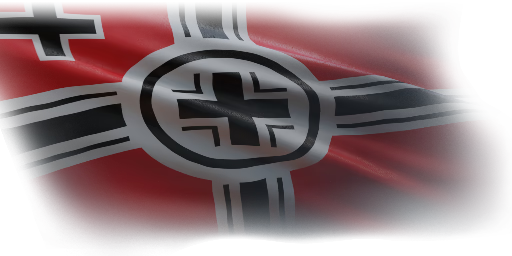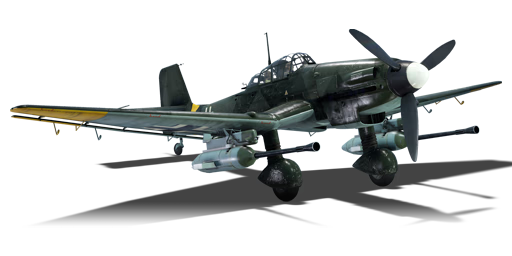



The Ju 87 G-1 is a German strike aircraft. It has been in the game since the start of the Open Beta Test prior to Update 1.27.
The difference between the G-1 and G-2 variants is the type of wing utilized. The G-1 employs the same wing type as the Ju 87 D-3 while the G-2 instead utilizes the same wing area as the Ju 87 D-5 variant.
Regarded highly by famed German ace Hans-Ulrich Rudel, the Ju 87 G is one of the deadliest ground attack aircraft in War Thunder. Building upon the classic "Stuka" design, German engineers fitted a pair of Bordkanone 37 mm cannons to early Ju 87 D models, creating a beast. Instead of bombs, this aircraft utilizes its twin synchronized 37 mm anti-tank cannons to demolish any armour it faces. Able to fire the German 37 mm high-velocity armour piercing round, the Ju 87 G is more than a force to be reckoned with. Unfortunately, each cannon only holds 12 rounds of ammunition each, for a total of 12 individual shots. This puts a cap on how much total damage the Ju 87 G can do.
The Ju 87 G's armament, a pair of Bordkanone BK 3,7 cannons, are deadly in all regards. They are able to destroy most ground units and aircraft with a single press of the trigger. Equip air targets or armoured targets belt depending on what your target is. The armoured targets belt is fairly ineffective against aircraft and the air targets belt does next to nothing to armoured ground units.
The Ju 87 G-1 differs from its later counterpart, the Ju 87 G-2 in that it utilizes the earlier D models such as the Ju 87 D-3. The G-2 model uses the later Ju 87 D-5 model.
flaps
flaps
flaps
brake
control
| Belt | Belt filling | Armor penetration (mm) at a distance: | |||||
|---|---|---|---|---|---|---|---|
| 10 m | 100 m | 500 m | 1000 m | 1500 m | 2000 m | ||
| HVAP-T/HEF-T | 108 | 101 | 75 | 51 | 35 | 24 | |
| HVAP-T | 108 | 101 | 75 | 51 | 35 | 24 | |
| HEF-T | 7 | 7 | 5 | 4 | 4 | 4 | |
| Belt | Belt filling | Armor penetration (mm) at a distance: | |||||
|---|---|---|---|---|---|---|---|
| 10 m | 100 m | 500 m | 1000 m | 1500 m | 2000 m | ||
| AP-T/Ball/Ball/AP-I/AI | 9 | 8 | 6 | 3 | 0 | 0 | |
| AP/AP/AP/AP-T | 13 | 12 | 7 | 3 | 2 | 0 | |
| AP-I/AP-T/AP-I/AP-T | 9 | 8 | 6 | 3 | 0 | 0 | |












Flight performance | |
|---|---|
Survivability |
|---|
Weaponry | |
|---|---|